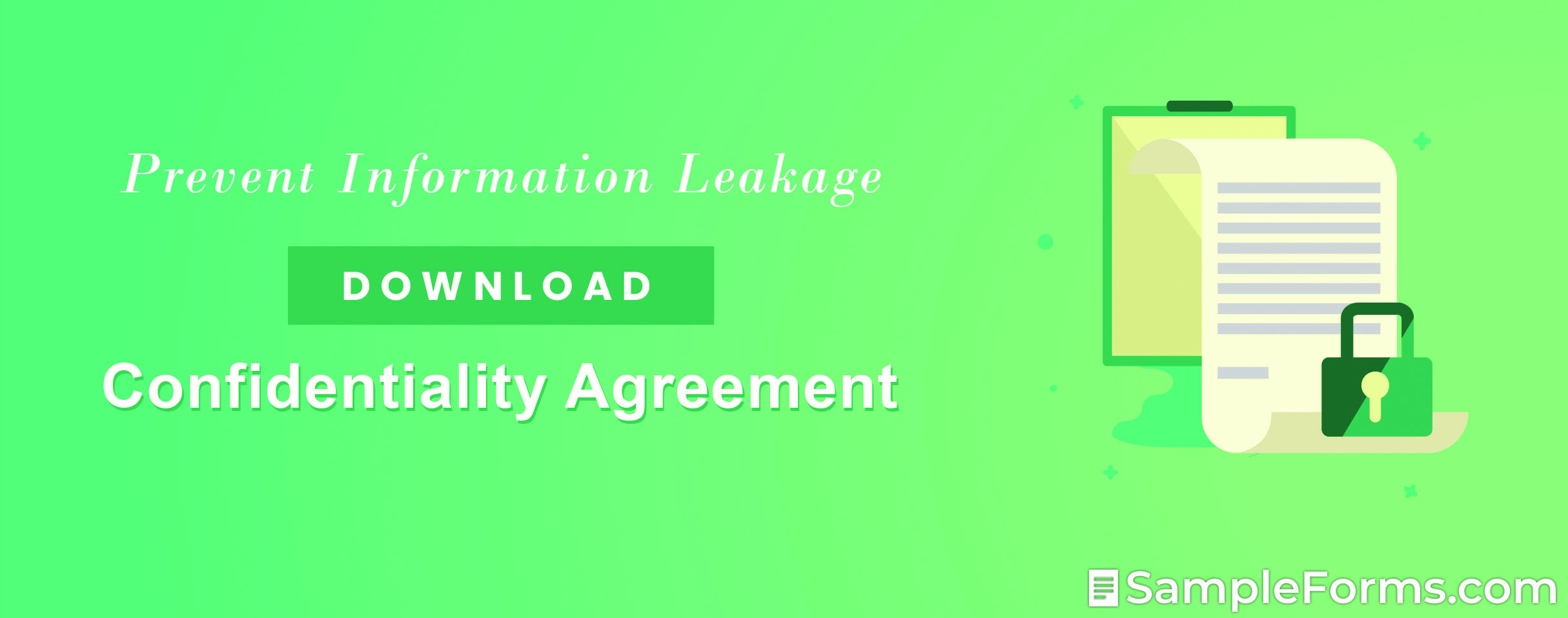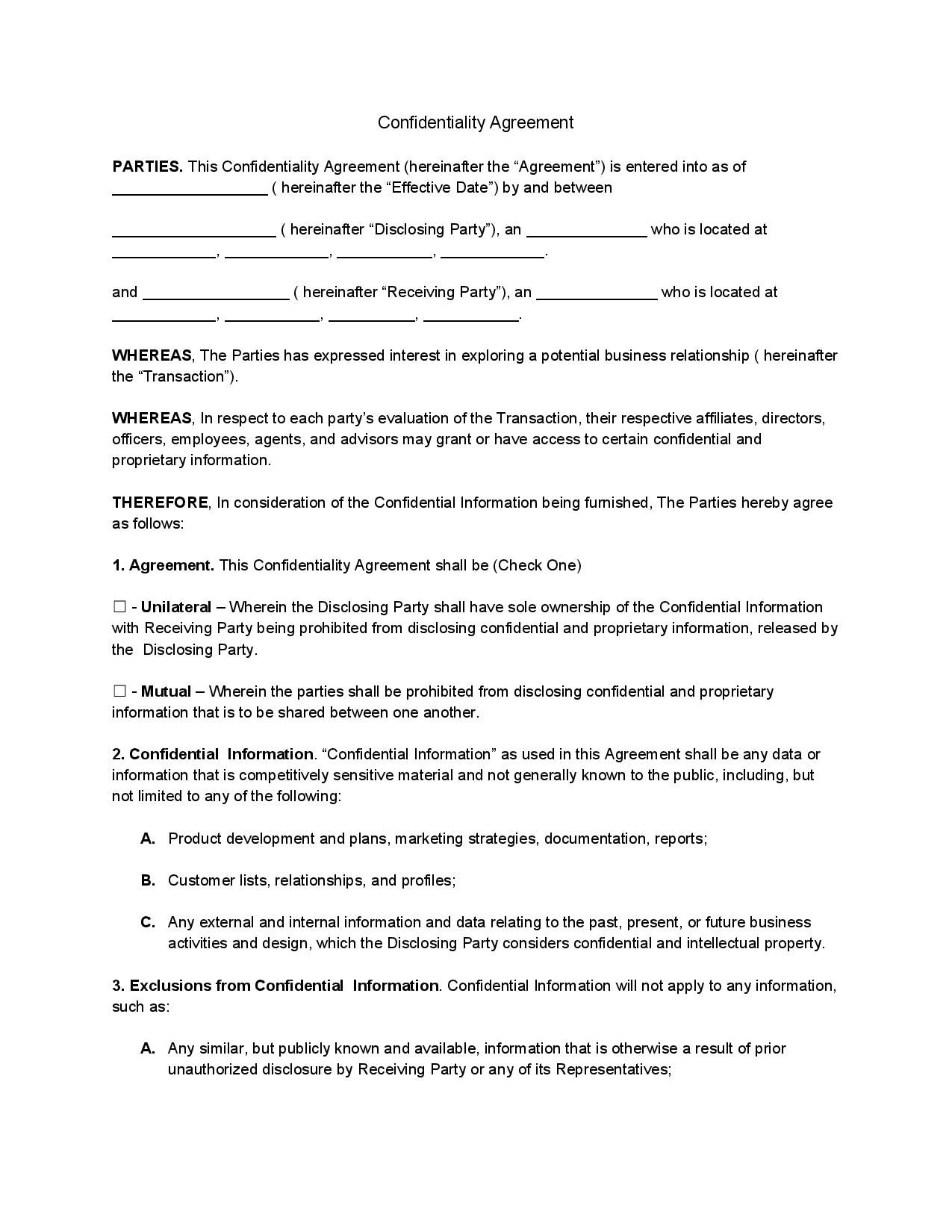- Eviction Notice Forms
- Power of Attorney Forms Forms
- Bill of Sale (Purchase Agreement) Forms
- Lease Agreement Forms
- Rental Application Forms
- Living Will Forms Forms
- Recommendation Letters Forms
- Resignation Letters Forms
- Release of Liability Agreement Forms
- Promissory Note Forms
- LLC Operating Agreement Forms
- Deed of Sale Forms
- Consent Form Forms
- Support Affidavit Forms
- Paternity Affidavit Forms
- Marital Affidavit Forms
- Financial Affidavit Forms
- Residential Affidavit Forms
- Affidavit of Identity Forms
- Affidavit of Title Forms
- Employment Affidavit Forms
- Affidavit of Loss Forms
- Gift Affidavit Forms
- Small Estate Affidavit Forms
- Service Affidavit Forms
- Heirship Affidavit Forms
- Survivorship Affidavit Forms
- Desistance Affidavit Forms
- Discrepancy Affidavit Forms
- Guardianship Affidavit Forms
- Undertaking Affidavit Forms
- General Affidavit Forms
- Affidavit of Death Forms
Confidentiality Agreement
There are certain things you do as a business owner to secure your original ideas from your competitors. But when dealing with an individual that is not from your company, it’s safe to say that you’re risking way too much. To secure privacy and exclusivity, employers can draft a confidentiality agreement to ensure that everything stays in place. This legal document will make the receiving party liable for any breach or exposure of confidential information to competitors or the general public. Get to know more about this type of agreement by reading this article. Read More
What Is a Confidentiality Agreement?
A confidentiality agreement is a legal document between two or more parties that requires the receiving party not to disclose any confidential information to a third party or the general public. Said information is usually not to be shared with the competitors. If the receiving party accidentally or intentionally discloses the information, they will be held responsible for damages. This agreement is sometimes referred to as an NDA or a Non-Disclosure Agreement.
The duration of a confidentiality agreement is dependent on what’s negotiated. The contract may require the receiving party to keep the information confidential even after the agreement ends. Sometimes, the confidential information lasts until the deal ends.
How Do You Write a Binding Confidentiality Agreement?
Your confidentiality agreement will serve as a protection for your assets. To write a strong confidentiality agreement, read our helpful tips below:
1. Supplement the Parties’ Information
Start the agreement by supplementing the parties’ information along with their mailing addresses. Identify who is the disclosing party and who is the receiving party. If you include the employees and agents of the receiving party in the confidential information, then they should be included in the agreement as well.
2. Specify the Agreement Type, the Confidential Information, and Its Exclusions
The agreement type is either mutual or unilateral. Mutual is when both parties acknowledge upholding the confidential information of each other. At the same time, unilateral is when only one party is responsible for maintaining confidentiality.
Specify the confidential information. Examples of which are simple product development and plans, designs, documentation, customer lists, etc. List down the exclusions of this information. Your list must be specific to avoid the potential leaking of incomplete information. Sample exclusions would be public information or information that is obtained by the receiving party from a third party.
3. State the Obligations and Representatives
Under this provision, you should obligate the receiving party and their representatives to keep the information confidential. Any information disclosed by their representatives, whether intentional or not, the party responsible should be held liable. Cite the potential repercussions should the proprietary information is leaked.
4. Include a Disclaimer and Integration
The disclaimer provision states that both parties are to act in the best interest of the transaction—therefore, giving them the right to reject any proposals or negotiations with the other party. In comparison, the integration provision states that both parties have a complete understanding of the subject matter and that any revision should only be in writing with prior notice of both parties.
5. State a Provision for Notices
If notices are to arise from the agreement, this provision will dictate how both parties will receive a notification. A return receipt will be requested to certify that the other party has received the notice. Place the preferred mailing addresses of both parties under this provision.
Include other provisions such as the terms and period, governing law, and the effectivity. Make sure these provisions are in line with your state’s laws to avoid any complications in the future. You can also add extra conditions in the template that are not provided
6. Affix Your Signatures
Once the agreement has been reviewed by both parties, sign the document. This legal document will not be significant unless affixed by dated signatures. Once signed, produce two copies of the agreement as personal records.
Frequently Asked Questions
Why is a Confidentiality Agreement important?
A confidentiality agreement protects the company’s information that is disclosed to an independent contractor, investor, or vendor. It compels the receiving party not to disclose a detailed list of information to a third party or the general public. However, there are certain exclusions to a confidentiality agreement—such as public information or information from a third party.
Are there any differences between a Confidentiality Agreement and a Non-Disclosure Agreement?
Yes. A confidentiality agreement requires heightened secrecy from the receiving party. It requires the said party to protect it from theft, impose restrictions, and other relevant protection. Aside from that, it also binds the subcontractors, employees, and/or representatives to the agreement. Whereas a non-disclosure agreement only requires the receiving party not to disclose the information.
How long should a Confidentiality Agreement last?
It depends on the confidential information entailed in the agreement. Some information may require the receiving party to keep the information confidential until the end of the agreement. Whereas some agreements may require the receiving party to keep the information confidential even after the agreement ends. But usually, this agreement lasts up to two, three, or five years.
What happens if one violates a confidentiality agreement?
If a confidentiality agreement is violated, you can seek legal action, and you can demand damages for the distress caused by the receiving party.
What are the examples of confidential information?
According to BitSight, confidential information is inventory and operational data, employee data, trade secrets and intellectual property, customer information, and industry-specific data.
A business will have difficulty in thriving when the products or services are almost identical to its competitors. In short, patrons will stick to the pioneers because there is no uniqueness. To stand out, you have to strategize on how you can bring something new to the table. And these innovative ideas are considered confidential because of their potential to rival your competitor’s products. To protect these, you need a printable confidentiality agreement template to ensure the protection of your company and your assets. Uphold your deserved privacy by starting with a confidentiality agreement.

